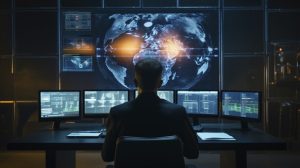In today’s digital landscape, where cyber threats are ever-evolving, email security is more critical than ever. With phishing attacks, malware, and data breaches on the rise, securing email communications has become a top priority for individuals and businesses alike. This guide will walk you through the essentials of email security, why it matters, and how to implement best practices to keep your inbox safe.
What is Email Security?
Email security refers to the measures and techniques used to protect email accounts and communications from unauthorized access, cyberattacks, and other threats. It encompasses various practices, tools, and protocols designed to prevent email-based threats like phishing, malware distribution, spam, and data breaches.
Why is Email Security Important?
Emails are a primary mode of communication for both personal and professional use, making them a prime target for hackers. Compromised emails can lead to:
– Data breaches exposing sensitive information.
– Financial loss from phishing or business email compromise (BEC) attacks.
– Reputational damage for businesses if confidential data is leaked.
Common Email Security Threats
Understanding the main threats to email security is essential to defending against them. Here are some of the most common ones:
Phishing involves tricking users into providing sensitive information by pretending to be a legitimate source. Phishing emails often mimic familiar companies and include links to fraudulent sites.
2. Malware and Ransomware
These emails contain malicious attachments or links that, once clicked, install harmful software on your device, potentially locking you out of your files or exposing your sensitive data.
3. Spam and Unwanted Emails
Spam emails are a nuisance but can also carry malware or phishing links. Effective spam filters help reduce this risk by filtering out irrelevant and potentially harmful emails.
4. Business Email Compromise (BEC)
BEC attacks target businesses by posing as trusted entities within an organization to deceive employees into transferring funds or sharing confidential data.
5. Email Spoofing and Impersonation
Spoofing involves forging the sender’s address to make an email appear as if it’s coming from a trusted source. This tactic is often used in phishing attacks.
Email Security Best Practices for 2024
1. Use Multi-Factor Authentication (MFA)
Adding an extra layer of security with MFA helps ensure that even if a password is compromised, the account remains secure. MFA typically involves a secondary code sent to a mobile device or an authenticator app.
2. Implement Email Filtering and Anti-Spam Tools
Email filtering tools help detect and block suspicious emails. Anti-spam software can also be integrated to filter out spam emails, reducing exposure to potential threats.
3. Educate Employees on Email Security
Cybersecurity training is essential, as employees are often the first line of defense against phishing and other attacks. Regular training sessions help employees recognize threats and follow best practices.
4. Encrypt Sensitive Emails
Encryption ensures that even if emails are intercepted, the content remains unreadable. Many email services offer encryption options to secure sensitive information.
5. Enable Advanced Threat Protection (ATP)
ATP tools provide comprehensive protection against sophisticated attacks like zero-day threats and malicious attachments. They analyze and block potential threats in real-time.
6. Regularly Update and Patch Systems
Outdated software can contain vulnerabilities that hackers exploit. Ensure your email platform, security software, and operating systems are up-to-date with the latest security patches.
7. Use Strong, Unique Passwords
Avoid using easily guessable passwords or reusing passwords across accounts. Strong passwords, combined with a password manager, offer greater security.
Popular Email Security Solutions
Several advanced email security tools provide effective protection against a range of threats. Here are a few to consider:
– Microsoft Defender for Office 365 – Protects Office 365 users from phishing, malware, and malicious links.
– Proofpoint – Focuses on threat detection and includes advanced features like URL defense and email archiving.
– Mimecast – Known for email filtering, impersonation protection, and content control.
– Cisco Email Security – Provides protection against phishing, malware, and other threats, ideal for large organizations.
– CYSECURE ANTI EMAIL SPOOFING – is an email authentication protocol designed to protect your company’s email domain from being used for email spoofing, phishing scams and other cybercrimes
Future Trends in Email Security
As cyber threats grow, so do advancements in email security. Here’s what to expect in 2024 and beyond:
– AI-Powered Threat Detection: AI and machine learning enhance email security by identifying suspicious patterns and adapting to new threats.
– Zero Trust Policies: Zero Trust architecture, which treats every email as a potential threat until verified, is likely to become a standard practice.
– Enhanced Mobile Security: With more professionals accessing emails via mobile, securing mobile devices will become increasingly critical.
Conclusion
Email security is an ongoing process that requires vigilance, the right tools, and regular updates to combat evolving threats. By implementing the practices and solutions discussed in this guide, you can significantly reduce the risk of email-based attacks and protect your information. Whether you’re an individual user or a business, investing in email security is essential in safeguarding your digital communications.
Need cyber security solution for your email business? Contact terrabyte now!




